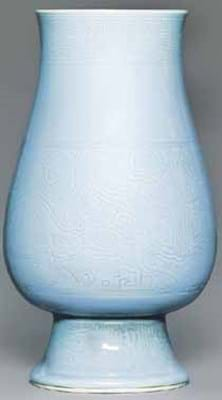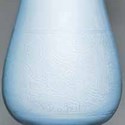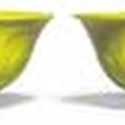As well as his love for clocks, he spent 50 years forming a vast collection of Ming and Qing dynasty monochromes, buying extensively from established London dealers such as Mayfair's Bluett & Sons and John Sparks. The collection formed Christie's King Street 287-lot single-owner sale on June 7.
As well as being a collector, Professor Hall was a scientist. The Director of the Oxford Research Laboratory, he created the thermoluminescence test used to date ancient pottery. Together with his co-researcher A.M. Pollard, he also used non-destructive methods of X-ray fluorescence spectrometry to identify the materials used by Chinese potters to produce the wide range of vivid monochrome colours.
The collection attracted interest from Hong Kong, mainland Chinese, London, and New York dealers and collectors, but a large proportion of the sale was secured by two different European collectors, paddle numbers 923 and 919, bidding on commission via Christie's specialist Anthony Lin.
In the 136-lot afternoon session, these paddle numbers secured at least 18 lots each, with no. 923 taking home the highlight: a Kangxi mark and period (1662-1722) clair de lune zhi-shaped vase. It is unusual to find a clair-de-lune glaze employed on an archaistic bronze form and this £25,000-35,000 estimated lot was contested to £110,000.
The same collector bid £95,000 for a Kangxi mark and period yellow glazed jar and cover against interest from London dealers James Hennessy and Tony Carter, and also secured a Kangxi period lavender blue glazed ink box and cover.
Its rectangular shape was based on an Islamic metal form and its cover was moulded with a three-clawed dragon. The blue glaze, coupled with its design made it a must-have, and although a badly damaged comparative example recently sold at a provincial auction house at £5600, this better preserved box, realised £42,000.
In line with the market as a whole, the strongest prices were realised for the 18th century Imperial mark and period monochromes, with Chak & Co securing a pair of Yongzheng mark and period lemon yellow enamelled moulded bowls at £95,000 against a £25,000-35,000 estimate.
Headlining Christie's 182-lot mixed-owner sale that followed was a Yuan dynasty (1279-1368) blue and white guan. The body of the 18in (46cm) high jar and cover was boldly painted with bands of scrolling peonies, phoenix and chrysanthemum, Buddhist emblems and classic scrolls, while the shoulders were set with two zoomorphic monster masks, their jaws pierced for the attachment of handles, and the neck encircled with an unusual blackberry band. One of a distinct group of guan produced at this time, it sold on its lower estimate at £300,000 to an East Asian dealer.
Chinese-taste wares still dominate, with quality and rarity overcoming any shortcomings over condition
PROFESSOR Edward T. Hall (1924-2001) was a born collector, amassing over a million cigarette cards as a schoolboy at Eton College and later building a celebrated collection of clocks and scientific instruments that was sold at Christie’s King Street last July.








